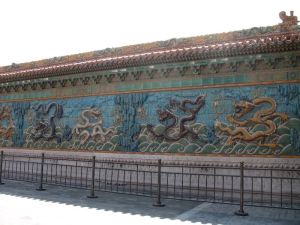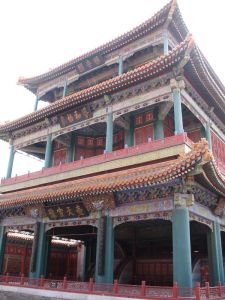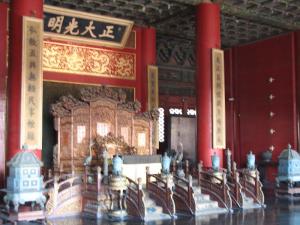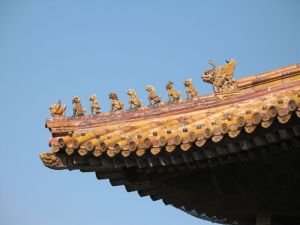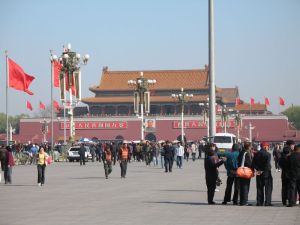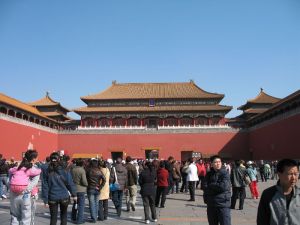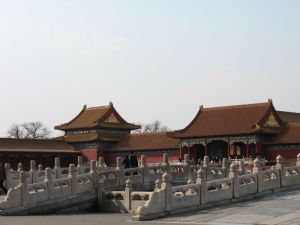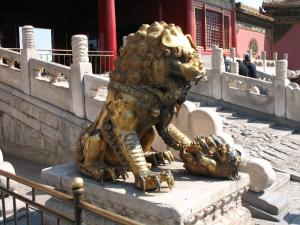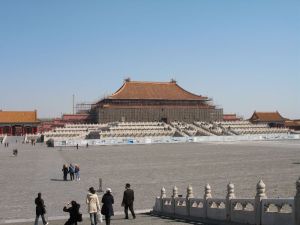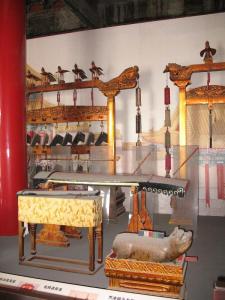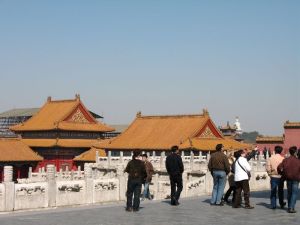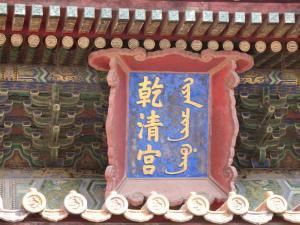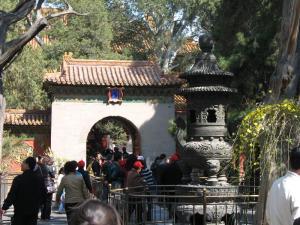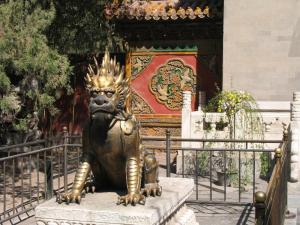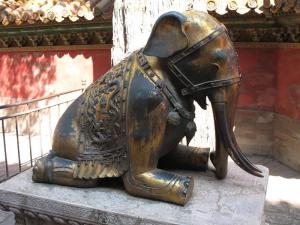First, a few more pictures from the Forbidden City.
Dragons and the number nine were associated with the emperor, and this is one of three nine-dragon walls in China.
Or half of the wall, anyway.
On the half that’s outside this shot, one of the tiles is wooden. It’s thought that a worker broke the original tile when the wall was being assembled and the wooden replacement was secretly made to avoid punishment. The tile probably blended in perfectly when it was new, but as it aged, it faded more rapidly than the ceramic tiles and is now noticeably different.
This is a stage for Chinese opera.
And for another lousy-but-possibly-interesting picture, this is one of several throne rooms in the Forbidden City.
The plaque above the throne says “just and honorable.”
Little figures like these are placed at the corners of palace roofs in both China and Korea.
The more important the building, the more figures there are.
Some impressions of China.
When I wrote about my brief stay in Hong Kong, I said that among the Chinese cities I visited, Hong Kong was my favorite, because it didn’t suffer from some of the unpleasant aspects of mainland culture.
One of those unpleasant things is that people in China spit all over the place, including on the train and in buildings. And it’s not just the rough, uneducated types; at the airport in Beijing, I saw a neatly-uniformed airport employee spit on the moving walkway.
Sometimes this casual disregard for cleanliness in public spaces was really bad. In a modern shopping district in Guilin, a small child needed to pee, so his mother helped him with his pants and had him relieve himself on the sidewalk. She could have at least had him do it by a tree or in the gutter, but nope, right on the sidewalk.
But as much as these things made me cringe, they’re not terrible, relatively speaking. The worst problem on the mainland was that the vast majority of people had little concept of waiting one’s turn. Most of the time it wasn’t noticeable, but it became infuriatingly apparent when I used the subway in Beijing and Shanghai.
I can say from experience that in Japan, Korea, and Thailand, people waiting for the metro form lines where markings on the platform say to, and when the train arrives, they let the disembarking passengers get off before they themselves board. In China, I saw signs telling passengers to do this, but that’s not what happened. Sometimes the people waiting on the platform did make lines (or were forced to by station attendants), but when the trains came, everyone would just crowd in front of the doors, and then they’d push their way on without letting anyone get off first. There was no meanness in it, but the basic consideration for others embodied in waiting your turn was neither shown nor expected, and it made an utter mess of the already crowded subways. The government had signs and posters everywhere laying out all sorts of etiquette, from “no spitting” and “wait in line,” to the practice of using one side of an escalator for standing and the other side walking, but while the escalator thing seemed to be catching on, the rest will probably be a long, uphill battle.
Speaking of government-sponsored ads (and to avoid ending on a negative note), it was four or five months before the Beijing Olympics when I was in China, and I saw a lot of billboards and TV spots not only hyping the Olympics, but also explaining them. Most educated Chinese were thrilled to be hosting the Games, but evidently a lot of people (the “Zhou Six-Packs” of China, perhaps?) didn’t know much about the Olympics – I even saw a cartoon explaining footraces (why there are lanes, why runners start from a crouch, etc.) – so the government was doing its best to get people informed and excited.
